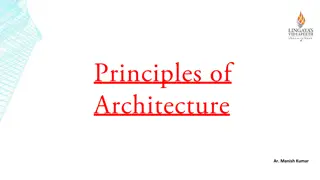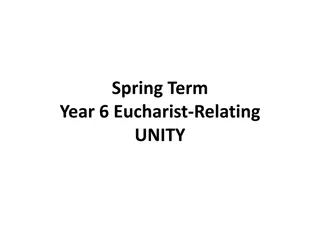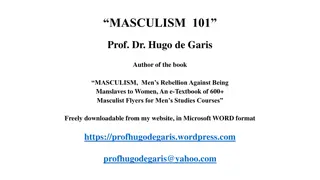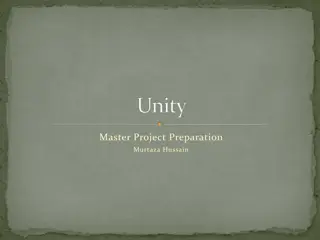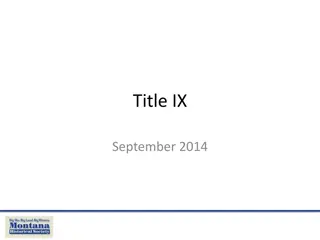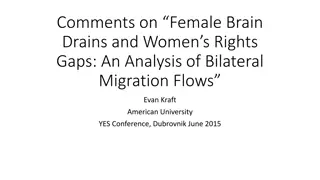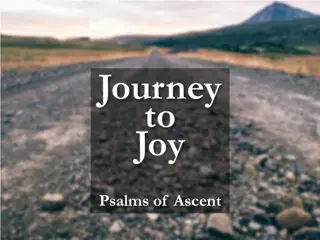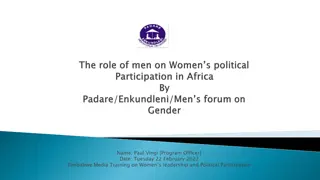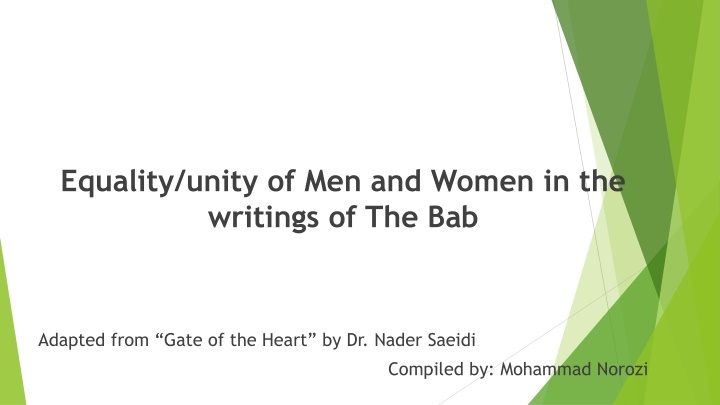
Equality and Unity of Men and Women in the Writings of The Bab
Explore the symbolic representation of men and women as possessors of temples and circles in the writings of The Bab. Learn about the significance of the pentagram and the diereh as representations of divine unity and equality between genders.
Download Presentation

Please find below an Image/Link to download the presentation.
The content on the website is provided AS IS for your information and personal use only. It may not be sold, licensed, or shared on other websites without obtaining consent from the author. If you encounter any issues during the download, it is possible that the publisher has removed the file from their server.
You are allowed to download the files provided on this website for personal or commercial use, subject to the condition that they are used lawfully. All files are the property of their respective owners.
The content on the website is provided AS IS for your information and personal use only. It may not be sold, licensed, or shared on other websites without obtaining consent from the author.
E N D
Presentation Transcript
Equality/unity of Men and Women in the writings of The Bab Adapted from Gate of the Heart by Dr. Nader Saeidi Compiled by: Mohammad Norozi
Diereh (6 concentric circles) symbol of woman consists of 6 circles and 5 chambers. Star or Heykal is symbol of Man consists of 5 lines and 6 chambers. 1 2 3 4 5 1 2 5 6 4 3 See next slides for more explanations Note: In Abjad numerals H=5 and V=6 (read Vav). Together means Huva(He, referring to God)
The Bab speaks of males and females symbolically as the possessors of "temples" (hayakil; singular, haykal) and "circles," respectively. "Temple, here, refers to the pentagram or five-pointed star, which abstractly resembles a human figure with a head, two arms and two legs(1). Gate 10 of the 5th unity (in The Book of Bayan) discusses the ordinance that males should carry with them a temple and females a circle. Both temples and circles are made of complex symbols, and the believers are allowed to inscribe within them various verses of the writings of the Bab and to seek protection and the realization of the truth of those divine names in their lives. Some short works of the Bab are even written in this pentagram form. The temple consists of five lines which create six chambers.
Cont As the Bab explains, the "manifest" part is 5 and the "inner" part is 6(2). These numbers, again, refer to the two letters of Huva (He); the temple therefore refers to God and His Manifestation. The Bab allows the faithful to write on the five lines and in the six chambers whatever they wish of the writings of the Bab so that the divine words, reflected in the symbolic form of the human temple, will affect the souls of the people, making them the embodiments of divine attributes. The circle that women are to carry consists of six concentric circles which create five units of space between the six lines. Thus the circle mirrors the temple but with the manifest and inner aspects reversed. This also symbolizes the unity of men and women- although appearing in different forms, they are essentially the same and refer to the same reality (both are 11, manifestations of divine attributes).
References: (1) The Bahai symbol of the Greatest Name includes two of these temples, which refer to the Bab and Baha'u'llah. (2) The Bab, Persian Bayan 5:10.


